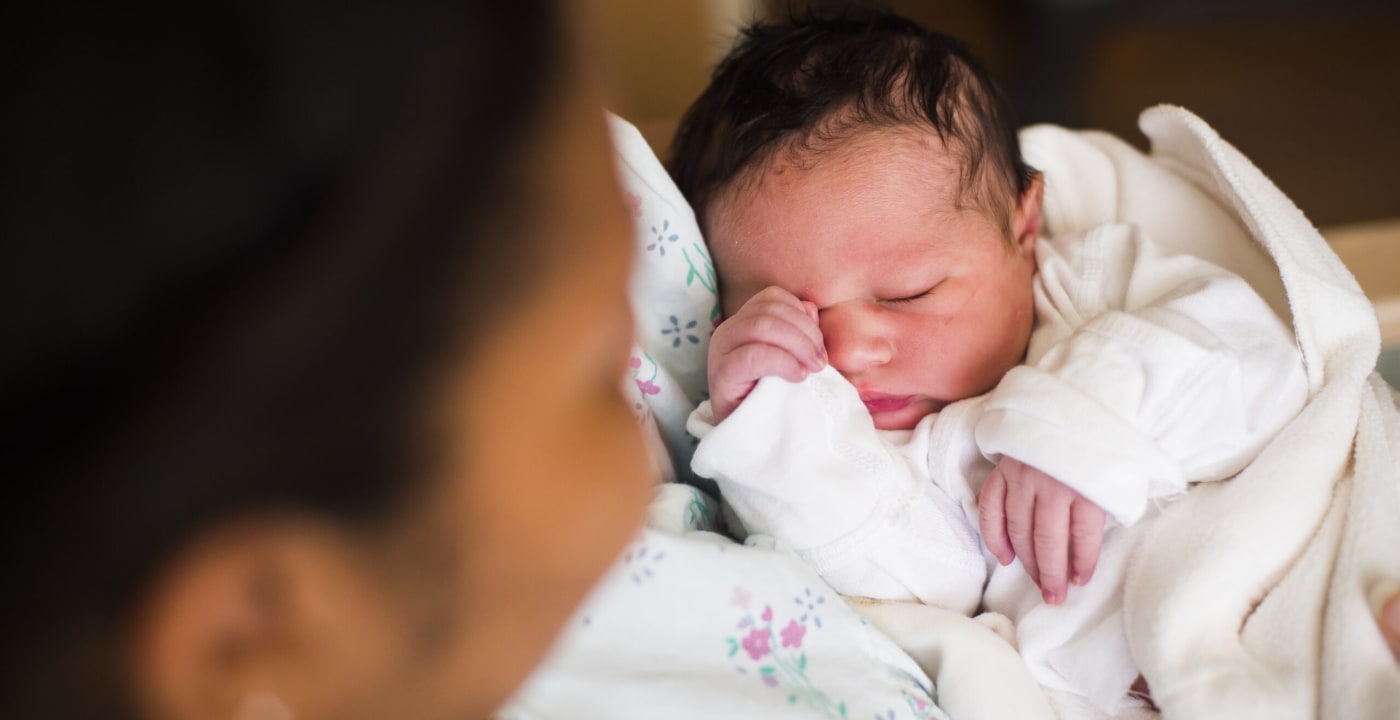What to expect: The first 24 hours

The baby’s crib is ready. Diapers lined up in a row. Outfits neatly folded.
Volumes have been written about getting ready for baby. But what happens during those first 24 hours of life?
The latest evolution of birthing best practices calls for “kangaroo care,” the practice of making skin-to-skin contact between baby and mother immediately after birth. MultiCare and its patients have embraced this research-based approach.
“We bring baby right up onto mom’s chest for the first hour, uninterrupted,” says Beth Fyles, RN, assistant nurse manager at MultiCare Tacoma General Hospital’s Family Birth Center.
The latest research shows skin-to-skin contact helps babies better regulate their body temperature and other key measures of health. MultiCare instituted the practice a few years ago, Fyles says.
Here’s a look at what else your baby will experience during his or her first day on the planet.
(What follows assumes a delivery free of complications. If anything unusual happens during birth, MultiCare’s doctors and nurses follow detailed protocols to ensure the health of mother and baby.)
Hour 1: Skin-to-skin and APGAR
As soon as baby leaves the birth canal, the doctor suctions baby’s mouth and nose to clear away fluid and ensure baby can breathe on their own. Then baby is placed on mom’s chest for skin-to-skin contact.
The umbilical cord is clamped and cut 30-60 seconds after birth. Delayed cord clamping has been shown to improve baby’s hemoglobin stores at birth and iron stores in the first several months of life.
Doctors deliver the placenta and begin repair work on any tearing around the birth canal that happened during birth. Meanwhile, nurses determine baby’s APGAR score. This measures baby’s color, heart rate, reflexes, muscle tone and respiratory effort (breathing) at one minute and five minutes after delivery.
“APGAR is an assessment tool — is medical intervention necessary?” Fyles says. “It’s not an indicator of how well baby will do or how smart baby will be.”
Depending on baby’s cues, the first breastfeeding may happen during the first hour. Nurses monitor mom’s uterus to ensure it’s shrinking properly and that bleeding is slowing.
Moms who deliver via C-section have a slightly altered order of business, but everything is geared toward making mom comfortable so baby can snuggle in as soon as possible.
Since the C-section is performed in a sterile operating environment, skin-to-skin is delayed about 20 minutes while doctors close the incision. During this time, nurses take baby to the warmer and measure length and weight, as well as perform the APGAR assessment. Kangaroo care happens after mom moves into the recovery room and feels her pain is under control.
“We do everything we can to make sure Mom and Dad can bond with their baby as quickly as possible,” says Moritz Bartels, MD, a specialist in obstetrics and gynecology.
Hour 2: Baby’s first physical
Baby receives a Vitamin K shot to prevent clotting problems, as well as an antibiotic eye ointment to take care of any bacteria picked up in the birth canal. Baby is also given an initial physical exam, including measuring length and weight.
Then mom and baby are on their way to a private room. MultiCare practices “rooming in,” understanding the importance of having mom and baby together as much as possible.
For moms who choose breastfeeding, ensuring they’re successful is a top priority, Dr. Bartels says. Lactation specialists help with all the details, including positioning and how to help baby find a good latch.
Hour 3–24: Rest, heal and cuddle
You rest, heal and learn how to care for your new baby.
Traditional practice has been to bathe babies once vital signs are stable, usually within 2-4 hours of birth. Recently, there have been several benefits identified with delaying baby’s first bath. These may include an increased likelihood of breastfeeding, allowing time for baby’s skin to absorb vernix — which can provide antibacterial promotion — and regulating baby’s temperature.
At Tacoma General, baby has their first bath 6-8 hours after birth, and you learn how to care for the umbilical cord stump. Baby also passes their first bowel movement, called meconium.
Baby is monitored for jaundice, which is a condition that causes yellow skin because a certain compound called bilirubin isn’t being broken down by the liver properly. And his heel is pricked to draw blood for an important screening test that looks for around two dozen different metabolic diseases.
Before you leave the hospital, baby has a hearing test and another weight check.
The last thing the nurses will check is the state of your car seat. Baby must be buckled in and have arms and legs free, so make sure that baby’s “going home” outfit is warm and simple, like footie pajamas or pants and a shirt.
While baby is in the car seat, the nurses will check baby’s heart function by placing oxygen monitors on a finger and a toe.
Babies don’t come with instruction manual. The Family Birth Center staff are always available to answer questions, from its 24-hour nursing line, urgent care centers and beyond.
Did you know November 11–17 is Tacoma Baby Week? Follow the fun on Facebook
This article was originally published June 2014 and updated November 2018.



